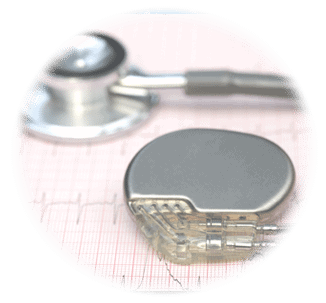

However, some variants of this device can record for 1-2 weeks. This type of monitor is most often used to record heart activity for 1-2 days. Most of these monitors are roughly the size and weight of a cell phone (and some use cell phones that have been specially modified just for this kind of use).
#Heart monitor implant side effects skin#
They read your heart’s activity through sensors called electrodes that are attached to your skin using a special adhesive. Most ambulatory monitors are external devices that you can carry with you. What are the different types of ambulatory monitors? Depending on the monitor used, they can track your heart's activity while you're sleeping, working or going about most parts of your daily routine. An EKG is done in a hospital or clinic setting and usually takes just a few minutes.Īmbulatory monitors use a similar method, but they do so for days, weeks or even years. That’s how a trained healthcare provider can read the EKG data and tell how well the different parts of your heart are performing. When parts of your heart aren’t working correctly, the electrical activity in those areas changes. When it's done with a live or printed readout of the electrical activity, it's called an electrocardiogram (EKG or ECG for short). The electrical activity of your heart is strong enough that it's easy to detect by devices that are attached to or implanted just under your skin. This ensures that your heart pumps in an organized, efficient sequence. That system controls the entire cycle of your heartbeat, using electrical pulses to cause the four chambers of your heart to act in a specific order. The person who reviews the data to make a diagnosis will almost always be a specialist physician, such as a cardiologist or electrophysiologist.Īll ambulatory monitors rely on the fact that your heart has its own electrical system. These tests involve a number of medical professionals, including technicians, nurses, physicians and more. These are irregular rhythms that happen in the lower two chambers of your heart. That means these are arrhythmias that happen in the upper two chambers of your heart, the left atrium and right atrium (the plural term is “atria”). ”Supra” means over, and the ventricles are the lower two chambers of your heart. These are heart rhythms that are abnormally fast. These are heart rhythms that are unusually slow. This can help detect arrhythmias that you don’t feel, that can happen unpredictably or that only last for a short period. While an EKG easily picks up some arrhythmias in a hospital or clinic, an ambulatory monitor casts a wider net and collects more data. What conditions are most likely to need an ambulatory monitor test?Īmbulatory monitors assist in diagnosing arrhythmias, which are irregular heart rhythms. They’re an invaluable tool when it comes to diagnosing problems that happen unpredictably and outside of a medical setting. These are used to detect heart rhythm problems over a longer period of time, and you can take them home with you. Ambulatory monitors are devices that record the electrical activity in your heart.


 0 kommentar(er)
0 kommentar(er)
